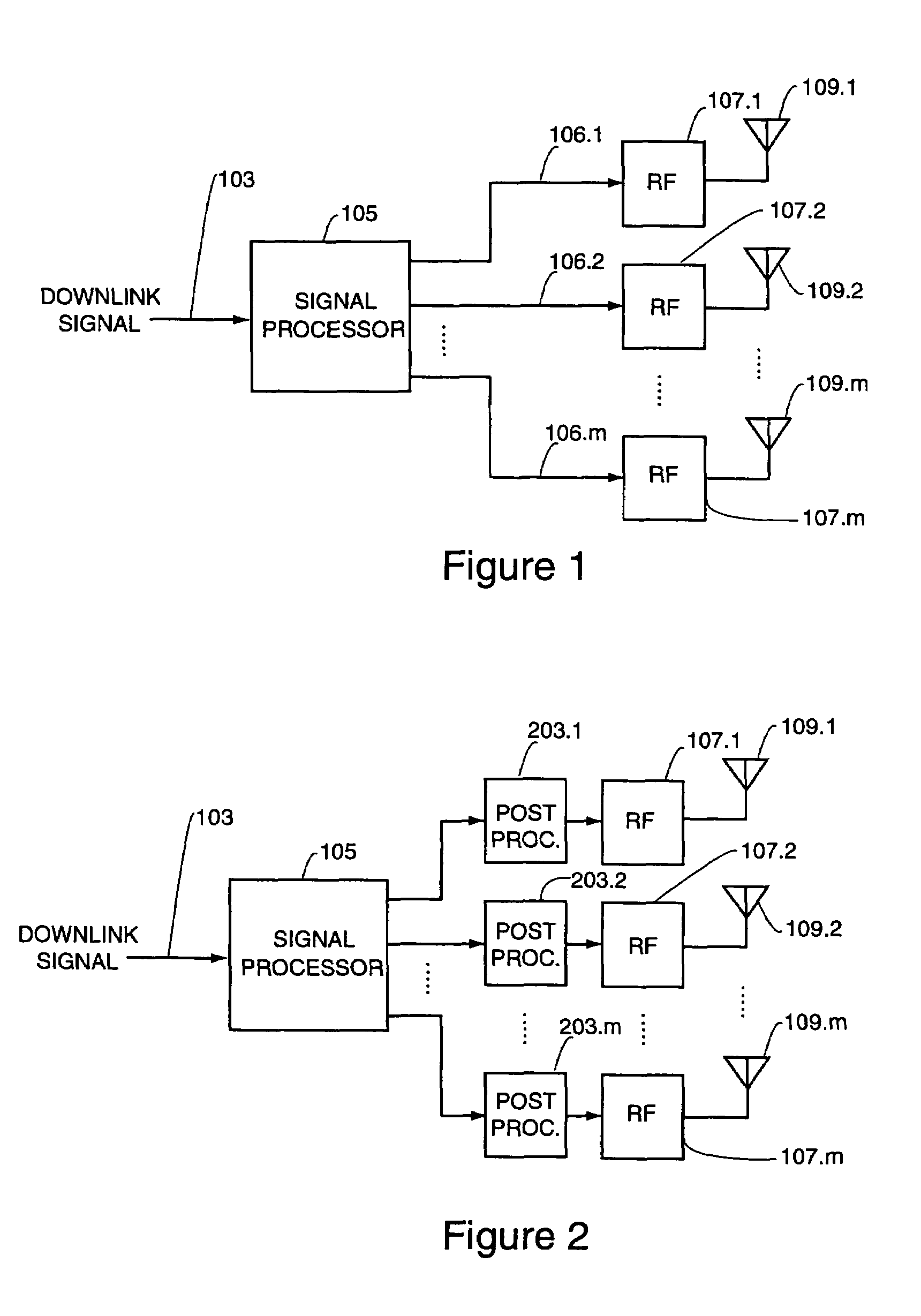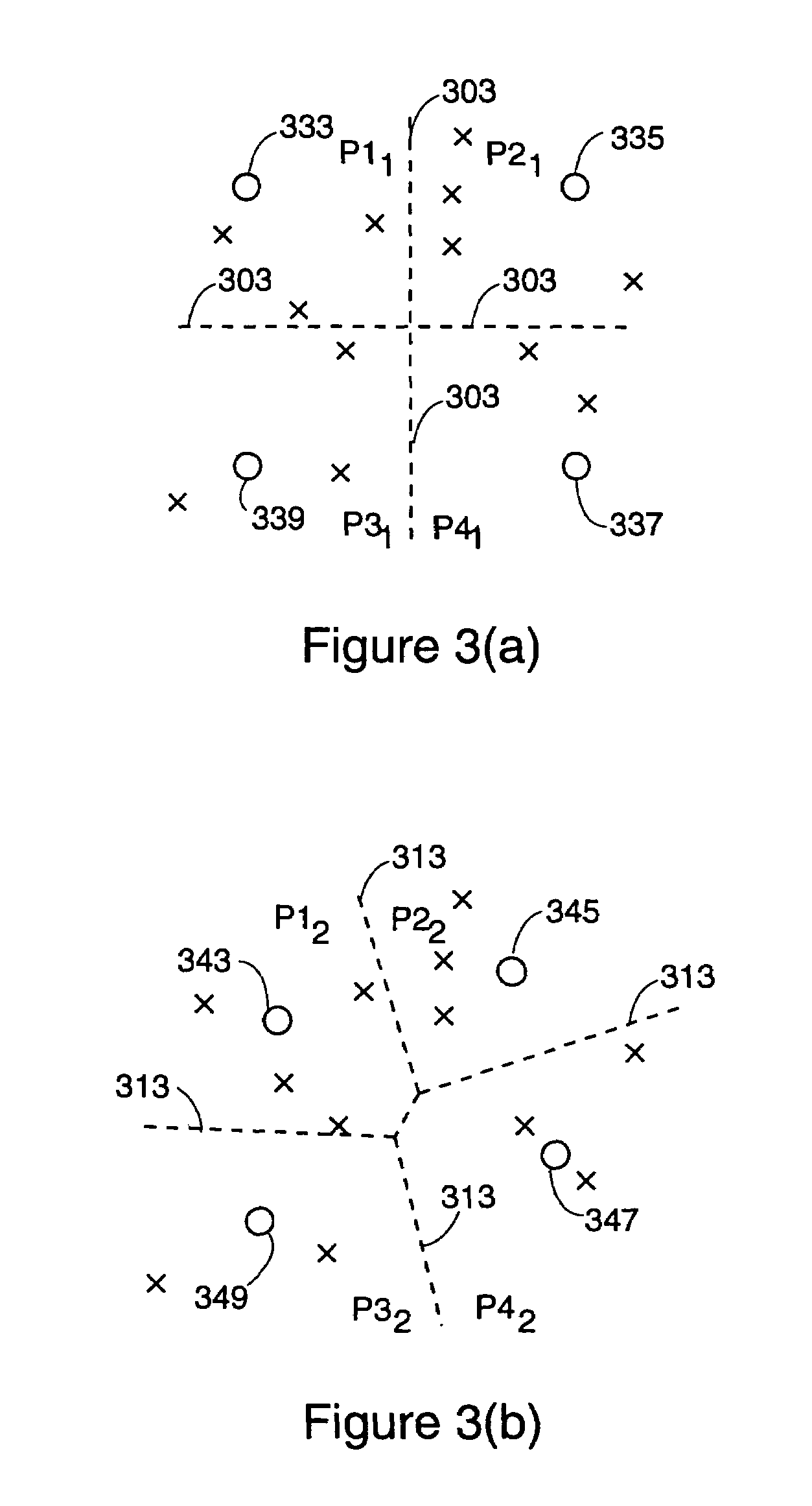Downlink broadcasting by sequential transmissions from a communication station having an antenna array
a transmission station and sequential technology, applied in multiplex communication, wireless communication, polarisation/directional diversity, etc., can solve the problems of increasing the total transmitter power, increasing power may not be allowed, and power amplifier cost tends to increase rapidly
- Summary
- Abstract
- Description
- Claims
- Application Information
AI Technical Summary
Benefits of technology
Problems solved by technology
Method used
Image
Examples
first embodiment
[0050]In using a sequence of weight vectors, the set of weight vectors consists of weights of elements having the same amplitude with randomly varying phase. Several ways are possible for implementing this.
[0051]One way of achieving such random phase is to pre-choose and pre-store a set of weight vectors having the equal amplitude elements, but with random phases, and sequence through the set of weight vectors.
[0052]A second way of achieving random phase is to have one prototype weight vector, and to repeat transmission with the same weight vector modified on the fly to randomize the phase. Mathematically, denoting the prototype transmit weight vector by w with elements w1, . . . , wm, the method includes repeating transmitting the downlink signal with a weight vector of elements w1 exp(jφ1), . . . , wm exp(jφm), where in each repetition, the φ1 . . . , φm are varied randomly. That is, each of the quantities φ1, . . . , φm is a random quantity uniformly distributed between 0 and 2π....
second embodiment
[0054]A second embodiment uses a set of orthogonal weight vectors for the sequence of weight vectors. In the preferred embodiment, the number of orthogonal vectors to sequence through is equal to m, the number of antenna elements in antenna array 109. Denote by wi, i=1, . . . , m, the ith (complex valued) transmit weight vector in the sequence. That is, for the duration of transmitting with the ith weight vector, the modulated signal to be broadcast is weighted (in baseband) in amplitude and phase to each antenna element according to the value of the corresponding complex valued element of weight vector wi. Let s(t) denote the downlink signal to be broadcast, where t is time (either an integer index for digital systems, or time in an analog system, as would be understood by those of ordinary skill in the art). Let fn represent the necessary transmit modulation for the particular transmit system. For the PHS standard used in the preferred embodiments, fn is differential quartenary ph...
PUM
 Login to View More
Login to View More Abstract
Description
Claims
Application Information
 Login to View More
Login to View More - R&D
- Intellectual Property
- Life Sciences
- Materials
- Tech Scout
- Unparalleled Data Quality
- Higher Quality Content
- 60% Fewer Hallucinations
Browse by: Latest US Patents, China's latest patents, Technical Efficacy Thesaurus, Application Domain, Technology Topic, Popular Technical Reports.
© 2025 PatSnap. All rights reserved.Legal|Privacy policy|Modern Slavery Act Transparency Statement|Sitemap|About US| Contact US: help@patsnap.com



